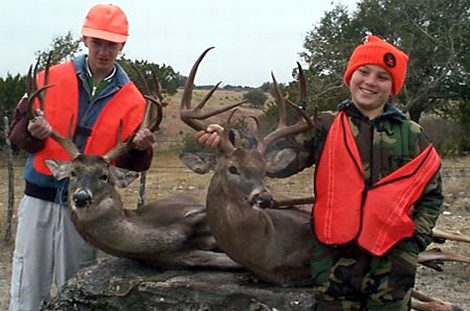
In 1974, a high-fenced research facility was constructed on the Kerr Wildlife Management Area located near Hunt, Texas. The purpose of the research facility was allow the Wildlife Division of Texas Parks and Wildlife Department (TPWD) to study antler growth in native white-tailed deer. The 16-acre facility consists of six 2/3-acre breeding pens, three 4-acre pens, and a series of alleys and chutes to facilitate the handling of research animals.
The orginal breeding pens consisted of seven brood bucks, of which six were spikes, and 5 to 7 does. All deer were native Texas whitetails obtained from various locations throughout the State. No additional deer were added after the fall of 1974 and the herd has been maintained as a closed, pedigreed herd.
The orginal purpose of the pens was to address the following objectives:
- 1. To determine factors which contribute to antler formation in white-tailed deer.
- 2. To determine the effect of nutrition level on antler formation and body weight.
- 3. To determine if deeer that were spike-antlered at 1 1/2-years of age (yearlings) have the same potential for antler development and body weight in later years as bucks which were fork-antlered at 1 1/2 years of age.
- 4. To determine the influence of genetics on antler characteristics.
Since 1974, this facility has been used in a series of inter-related research programs to determine the role of nutrition and/or genetics in the antler development process. Although related, each project had its own research design and specific objectives. Due to the large sample sizes and duration of the projects, TPWD has acquired a data set that they believe is unequaled throughout the world.
A total of 2,681 deer have been born in the pens with 474 dams and 138 sires actually used in various studies resulting in 2,219 sets of antlers for analysis. As a result of these studies, several basic principles have been conclusively proven:
- 1. Antler development is genetically based and environmentally influenced.
- 2. Antler traits are heritable and passed from parents to offspring.
- 3. Yearling antlers are a good indicator of future antler potential.
